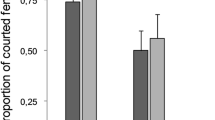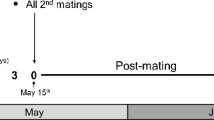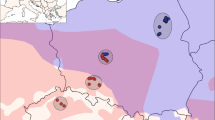Abstract
Female Calopteryx splendens xanthostoma (Charpentier) (Odonata), have two discrete sperm storage organs, the bursa copulatrix and the paired spermathecae. We used the Random Amplified Polymorphic DNA(RAPD) profiling technique to determine from which sperm storage organ spermatozoa were used to fertilise eggs during behaviourally distinct oviposition bouts. During oviposition bouts following remating sperm from the bursa copulatrix are largely used to fertilise eggs, but when females avoid remating before an oviposition bout the sperm used to fertilise eggs are derived mainly from the paired spermathecae. Our observations suggest that female C. s. xanthostoma can avoid male paternity assurance mechanisms by a combination of behavioural and anatomical adaptation: the reason(s) they do so is unclear.
Similar content being viewed by others
Author information
Authors and Affiliations
Additional information
Received: 28 November 1995/Accepted after revision: 5 August 1996
Rights and permissions
About this article
Cite this article
Siva-Jothy, M., Hooper, R. Differential use of stored sperm during oviposition in the damselfly Calopteryx splendens xanthostoma (Charpentier). Behav Ecol Sociobiol 39, 389–393 (1996). https://doi.org/10.1007/s002650050305
Issue Date:
DOI: https://doi.org/10.1007/s002650050305




